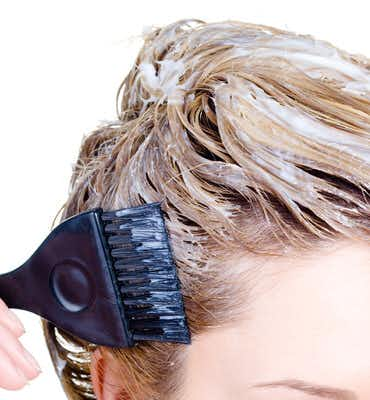
Q. I had bladder cancer, which was treated successfully with surgery. When I asked my doctor why people get this kind of cancer, he talked about smoking and exposure to dyes in manufacturing. I quit smoking more than 15 years ago and never worked in a factory.
I recently heard reports that hair dye might lead to bladder cancer. I use it more than once a month, putting it on before the gray begins to show. Doctors on television said beauticians get more bladder cancer than other people because of exposure to hair dye. I’d appreciate any information on this, since I don’t want it to come back.
A. The debate about a connection between hair dye and cancer has been raging for decades. And with good reason. According to the National Cancer Institute (NCI), “It is estimated that more than one-third of women over age 18 and about 10 percent of men over age 40 use some type of hair dye.”
In other words, tens of millions of Americans use hair dye on a regular basis for many years. Once you start down the road of hair dye it is hard to stop. Gray roots are not very attractive.
Hair Dye and Cancer: An Old Issue
The NCI notes that:
“Over 5,000 different chemicals are used in hair dye products, some of which are reported to be carcinogenic (cancer-causing) in animals. Because so many people use hair dyes, scientists have tried to determine whether exposure to the chemicals in hair coloring products is associated with an increased risk of cancer in people.”
Because of scary headlines during the 1970s and resulting consumer concerns about hair dye and cancer, most manufacturers removed a number of the aromatic amine ingredients found in popular products of that day. As a result of these changes, most people assumed the danger had disappeared. Is that assumption accurate?
Current Uncertainty About Cancer and Hair Dye
The National Cancer Institute states the ongoing dilemma:
“It is not known whether some of the chemicals still used in hair dyes can cause cancer. Given the widespread use of hair dye products, even a small increase in risk may have a considerable public health impact.”
That is an extraordinary statement. How can there be any uncertainty about an association between hair dye exposure and cancer? One would hope that in 2015 any doubts about safety would have been long resolved. Older epidemiologic studies have shown that hairdressers may be at increased risk for bladder cancer and that it may take decades to manifest itself (Occupational and Environmental Medicine, May, 2010; Critical Reviews in Toxcology, vol. 37(6), 2007).
Investigations on people who dye their hair have been inconclusive. The NCI summed it up this way:
“Although some studies have linked the personal use of hair dyes with increased risks of certain cancers of the blood and bone marrow, such as non-Hodgkin lymphoma (NHL) and leukemia, other studies have not shown such links. Studies of breast and bladder cancer have also produced conflicting results.”
We find all these statements unsettling. That is why we took your question seriously and looked for additional research. After all, hairdressers are the equivalent to canaries in the coal mines. That’s because they are exposed on a daily basis to such chemicals. If there were a risk, they would presumably be the first to experience it.
A report in the International Journal of Cancer (Feb. 2001) suggested a strong bladder cancer link with smoking–a known risk–and a “dose-related” link with hair dye. Women who used dark dyes at least once a month doubled their risk and those who relied on hair dye for 15 years or more tripled their risk. Beauticians with over 10 years experience had five times greater risk of developing bladder cancer.
Recent Research
The most up-to-date study we could find on this issue was published in Occupational and Environmental Medicine (Jan., 2015). The Swedish investigators looked for potential carcinogenic chemicals in the blood of 295 hairdressers, 32 hair dye users and 60 controls.
Their conclusion:
“We found that hairdressers using permanent hair dye and hair waving products seem to be exposed to carcinogenic aromatic amines. Systematic screening of those products to identify the sources of exposure is indicated.”
We find it surprising and somewhat shocking that such chemicals are still in use. Granted, this research was carried out in Sweden, so we do not know if such chemicals are still being used in the U.S. Nevertheless, we agree with the investigators that products should be screened for the presence of such compounds.
The Bottom Line:
For the general public, hair dye doesn’t seem to be a big risk, but we cannot say there is zero risk. We are more concerned about hairdressers, since they are routinely exposed to these products.
Since you have already been treated for bladder cancer your susceptibility may be higher than most people. To err on the side of safety, you may wish to avoid hair dye going forward.

